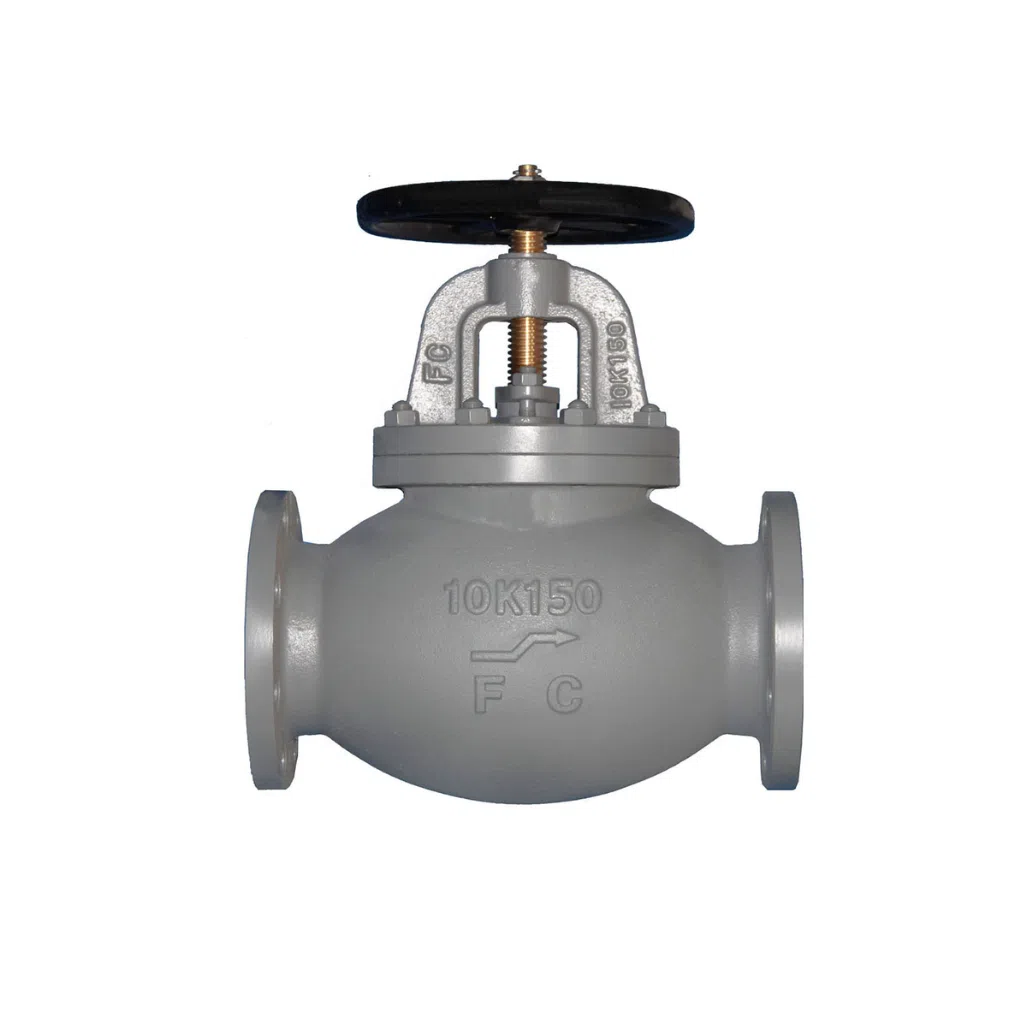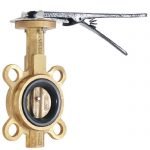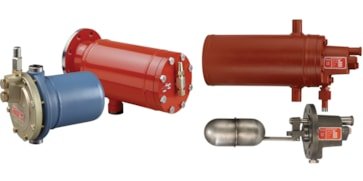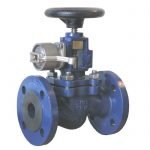A marine globe valve is a type of linear motion valve used to regulate the flow of a fluid.1 Unlike a gate valve, which is designed for a full on/off function, a globe valve excels at throttling, or controlling, the flow rate.2 This makes it a critical component in systems where precise flow control is required.3
The name “globe valve” originally came from the bulbous, globe-like shape of its body, though modern designs may vary.4
Working Principle and Design
A globe valve’s design is based on a movable disc or plug and a stationary ring seat.5 The disc moves perpendicularly to the seat, and as it is lowered, it restricts the flow.6 This action creates a tortuous, S-shaped path for the fluid, which causes a higher pressure drop compared to straight-through valves like gate or ball valves.7 This pressure drop is a necessary byproduct of its excellent throttling capability.
Key components of a globe valve include:
- Disc/Plug: The movable element that controls the flow.8 Discs can be flat, conical, or spherical, with different shapes providing varying degrees of flow control.
- Seat: A stationary ring inside the valve body against which the disc is pressed to stop the flow.9
- Stem: The shaft that connects the disc to the handwheel or actuator.10 It moves up and down to operate the valve.11
Types of Globe Valves
Based on the body design, there are three common types of globe valves used in marine applications:
- T-Pattern (Z-Pattern): The most common design, with a Z-shaped body that forces the fluid to change direction twice.12 This is a very effective design for throttling but results in a high pressure drop.13
- Y-Pattern: The valve body and seat are angled at approximately 45 degrees.14 This design provides a straighter flow path, reducing the pressure drop and making it more suitable for high-pressure and high-temperature services like steam lines.15
- Angle Pattern: The inlet and outlet ports are at a 90-degree angle.16 These valves are often used to make a 90-degree turn in a piping system, reducing the need for an additional elbow fitting and minimizing the number of pipe joints.
Applications and Materials
Globe valves are indispensable in systems requiring precise flow control.17 On a ship, they are commonly found in:
- Boiler and Steam Systems: For regulating boiler feedwater flow and controlling steam lines.18
- Fuel and Lube Oil Systems: For controlling the flow rate to engines or purifiers.19
- Cooling Water Systems: In bypass lines to regulate the temperature of the cooling water.20
- Emergency Bilge Suction Lines: Where variable pressure is required.21
Due to the variety of fluids they handle, globe valves are manufactured from different materials to ensure corrosion resistance:22
- Bronze / Gunmetal: Excellent for seawater and general service.23
- Cast Steel: For high-pressure and high-temperature systems like steam.24
- Stainless Steel: For applications with corrosive fluids.25
Maintenance and Common Issues
The throttling action of a globe valve puts a lot of stress on the internal components.26 Therefore, maintenance is focused on these parts.
- Seat and Disc Wear: The most common issue is wear and tear on the seat and disc due to the high-velocity flow during throttling. This can lead to poor sealing and leakage.27
- Leaking Stem Gland: Over time, the packing around the stem can degrade, causing leaks.28
- Seizing: Lack of operation or corrosion can cause the valve to seize.
Maintenance procedures include periodic inspection, cleaning, and lubrication.29 Worn seats and discs can often be re-machined or “lapped” to restore their sealing surface, or they can be replaced.
Spare Parts
A vessel’s inventory for globe valves should include:
- Disc/Plug: A spare disc is critical for restoring a valve’s throttling and sealing capabilities.
- Seat Rings: Replacement rings for screwed-in seats.
- Stem Packing: A gland packing kit is essential to stop leaks from around the stem.30
- Gaskets: For the bonnet-to-body joint.31
- Bolts and Nuts: For assembly.32
We offer an extensive range of marine engine brands and their associated spare parts, providing comprehensive solutions for both main propulsion and auxiliary power needs across diverse vessel types. Our supply capability covers various generations and models, ensuring support for a wide array of marine applications.
Featured Brands and Engine Series/Models:
SULZER:
- Two-Stroke Engines:
- RD/RND Series: RD68, RND76, RND76M, RND90, RND90M (Classic large-bore, low-speed engines, still in operation).
- RLA/RLB Series: RLA(B)56, RLA(B)66, RLA(B)76, RLB90 (Developed two-stroke designs).
- RTA/RT-Flex Series: RTA38, RTA48(T), RTA52, RTA58, RTA62, RTA72, RTA76, RTA84, RTA84M, RTA84C, RTA96 (Modern, fuel-efficient, electronically controlled two-stroke engines).
- Four-Stroke Engines:
- Z Series: ZL40/48, 16ZAV40S (Medium-speed engines).
- RF Series: RF44, RF56 (Often used for auxiliary power or generator sets).
- TAD Series: TAD36, TAD48 (For specific applications).
MAN (including pre and post-MAN B&W models):
- Two-Stroke Engines (KZ, KSZ, K, L, S, MC/MC-C, ME/ME-C): 40/54A, 52/90N, 57/80C, KZ57/80F, KSZ70/125, KSZ78/155, 90/160A, 52/55L, 58/64, 90/190C, L60/105E, 70/120E, 70/125C, L, KSZ78/155A, KSZ70/125B, L52/55A, 40/45 (A broad spectrum covering main propulsion and auxiliary engines).
B&W (Burmeister & Wain – prior to MAN B&W merger):
- MC/MCE Series: L35MC, L60MC, L80MC, L55GFCA, L80GFCA, L80GB, 74VT2BF, K62EF, K74EF, K84EF, K45GFC, K67GFK, K80GFK, K90GFS, 45HU, L70MC (Various generations of two-stroke diesel engines).
- MC-C/ME-C Series: L50MC, S60MC, S70MC, K80MC, S80MC, K90MC-C, L67GFCA, L90GB (Electronically controlled and conventional two-stroke engines).
- VT2BF/EF Series: 50VT2BF, 62VT2BF, K84EF (Older models still in service).
MITSUBISHI:
- UEC/UET Series: UEC37L/LA/LS, UEC45HA, UEC60L/LA/LS, UEC45L/LA/LS, UET45/75C, UEC52/125H, UEC52L/LA/LS, UET45/80D, UEC52/90D, UEC(T)52/105D, UEC45/115H, UEC37/88H, UEC37H (Mitsubishi’s proprietary two-stroke and some four-stroke engine series).
PIELSTICK:
- PA Series: PA6, PC3, PC2-2, IHI PC2-5, PC4, PC2-6, PC4-2L, PC4-570, PA5 (High-speed, compact four-stroke engines, commonly used for generator sets or auxiliary propulsion).
AKASAKA:
- UET/UEC/DM/AH Series: UET45/80D, UEC52/105D, DM51SS, UEC 60/150H, UEC 60H, A31, A34, A37, A41, AH27, AH28, AH30, AH36, AH38, AH40, DM30, DM36, DM38, DM46, DM47 (A prevalent engine brand, particularly in Japanese-built vessels).
DEUTZ:
- RBV/TBD/BVM Series: RBV8M358, RBV8M540, RBV16M640, TBD620L6, BVM350, BVM540, BF6M716 (Various four-stroke medium- and high-speed diesel engines for auxiliary and smaller main propulsion applications).
HANSHIN:
- EL/LH/LU/LUN/LUD/LUS Series: EL30, EL32, EL35, EL40, EL44, LH28RG, LH31G, LU28(A,R,G), LU32, LU35, LU38, LU46(A), LU50, LU54, LUN28, LUN30, LUD32, LUD35, LUS38 (Another significant engine brand commonly found in Japanese vessels).
NIIGATA:
- MG/M Series: MG40X(EX), M34X, 6M28BF, TM31X (Medium-speed diesel engines, typically used in small and medium-sized vessels).
MAK:
- M/MU/AK/AKM Series: M332, M453AK, MU551AK, MU552AK, M601, MU452AK, 451AK, 6M453AK, 9M453C, 6M601C, 8M601 (Medium-speed four-stroke engines, widely used in various marine applications).
WARTSILA:
- 20/22/26/32/38/46/GD/TKR Series: 22, 32, 31, 26, 20S, 28, 38, 46, 32GD, 46GD, 14, TKR22, HFR-V32, NOHAB (Wärtsilä’s broad portfolio of medium- and high-speed diesel engines for main propulsion, auxiliary, and generator sets).
DAIHATSU:
- PS/PKT/DS/DL/DK/PL Series: PS-18, PS-22, PS-20, PS-26, PS-30, PKT-14, PKT-16, PKTD-16, DS-18, DS-22, DS-26, DS-28, DS-32, DL-14, DL-16, DL-19, DL-20, DL-22, DL-24, DL-26, DK-20, PL-24 (Compact and reliable engines primarily used for auxiliary power and generator sets).
CUMMINS:
- BT/CT/NT/KTA/QSK/QSM Series: 4BT3.9, 6BT(A)5.9, 6CT8.3, NT(A)855, N14, KTA19, KTA38, KTA50, QSK19, QSM11 (Robust and durable engines for marine auxiliary power, generator sets, and some smaller main propulsion applications).
CATERPILLAR:
- 3000/3100/3300/3400/3500/3600 Series & C Series: 3054, 3056, 3066, 3106, 3126, 3306, 3406, 3408, 3412, 3508, 3512, 3516, 3606, 3608, 3612, 3616, 3618, C1.5, C2.2, C7, C9, C10, C12, C15, C16, C18, C30, C32 (Reliable and widely used engines across a vast range of main propulsion, auxiliary, and generator set applications).
SCANIA:
- DI Series: DI 09, DI 13, DI 16 (High-performance diesel engines designed for marine applications, typically used as auxiliary and smaller main propulsion engines).




